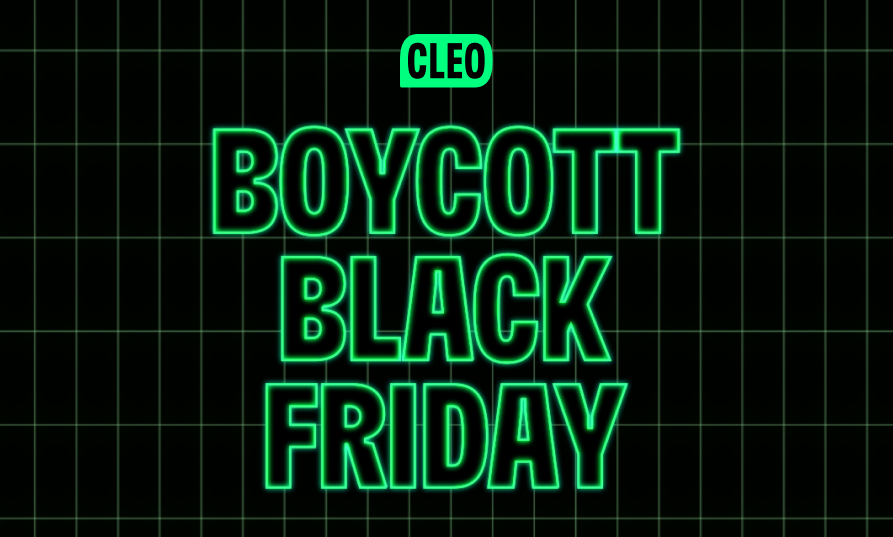
Black Friday.
Where to begin?
One big marketing ploy that targets those who can’t afford to spend the hardest by dressing all-year-round prices in sparkly ‘sale’ messaging. Aaand turning it into a literal holiday. No thanks.
What’s more, younger Americans - the people we’re trying most to reach - are the most likely to be enticed. Those aged 18-24 are most likely to shop the sales, with 69% saying they’ll be enticed to shop if the price is right. Meanwhile, those aged 65+ are least likely to take part, with just 52% saying any discount could catch their eye. Source.
At Cleo, we're on a mission to fight for the world's financial health.
We all know that many Black Friday ‘deals’ are not good value at all, putting pressure on people to spend money that they may not have or cannot afford to lose.
Boycott Black Friday was our headline campaign to support young Americans during a time where brands are bombarding the nation with often deceptive ‘sales’ messaging. Our campaign was born from the insight that young Americans are the most likely to be enticed by Black Friday messaging - and that just won’t wash with us. We have our audience’s back, and our campaign gave them the tools to rise above the Black Friday noise and get one over the billionaires.
We challenged our users to #BoycottBlackFriday
What did we want our audience to do? Absolutely nothing.
Simply don’t spend on Black Friday. And get rewarded for it.
Our campaign flipped the script on Black Friday. We armed our audiences with the information on why the day isn’t all it’s cracked up to be with:
User spending insights (in app)
Central to the campaign was a bespoke chat flow within the Cleo app, surfacing their spending at major brands and turning the evaluation of personal spending into an engaging, chat-driven experience encouraging them to join our boycott.
Once they had shared a screenshot from the app on their socials to join the boycott and enlist their friends they were entered into the campaign prize draw. Now all they had to do was spend nothing on the day itself (essentials were of course allowed) for a chance to win $500.
Alongside our in-app activation, we ran a multi-channel social campaign - a rallying cry to encourage our audience to dodge the brands and join our boycott. We dedicated our channels to opening up conversations with our audience around spending regrets, questionable purchases and Black Friday buys of the past.
Supporting emails continued this transparent line of communication with our audience and gave us space to share authentic user reflections on the temptations and difficulties around the day. Cleo was there to discuss, share and support the experiences of our users as they navigated their way through the Black Friday period.
Conversational formats drove highest engagement - iterating on boycott theme drove sustained strong engagement throughout the campaign.
Challenge: our aim here is not to shame our audience. The whole financial system is stacked up against them, they need to remember we’re fighting their corner. Messaging like this helps us to do this https://twitter.com/meet_cleo/status/1464631252032663553
On Twitter, we increased our YoY grouped retweets and mentions by 337%. On Instagram, we increased our YoY comments by 684%.
Chat flows entered: 28.9K. 75% of the users who entered the BBF chatflow did not spend anything on Black Friday that was categorised as shopping.
Total amount saved by Cleo users: $1.5M*
*28,939 users had a ‘black_friday_toxic_brands_new’ tone of voice session between the 19th November and the end of Black Friday. Of those who had a session, 21,802 didn’t spend anything on Black Friday that has been categorised as ‘Shopping’, so 75%. Users who didn’t have a ‘black_friday_toxic_brands_new’ session spent an average of $70.94 on Shopping on Black Friday. Meaning that the users who had a black_friday_toxic_brands_new’ session and didn’t spend anything saved a total of $1,546,633.
